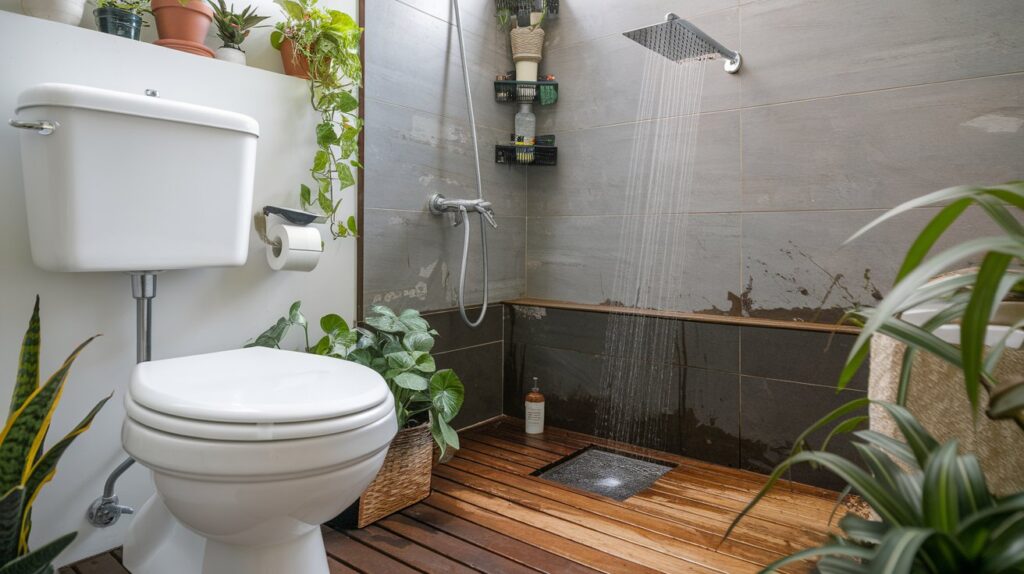Home maintenance requirements have considerably risen in recent years due to worsening climate change. Adverse weather events, such as storms and unprecedented cold waves, can affect plumbing systems. Habits like dumping wet wipes down the toilet or not clearing drains after baths can aggravate the situation, demanding professional help.
However, not all plumbing solutions are alike; some can be damaging to the environment and prove costlier over time. Approaching drainage or piping problems without considering the long-term impact of the solutions is both irresponsible and unsafe.
Amid growing awareness of the need for environmental protection and sustainability, the plumbing sector is slowly rising to the challenge. Here are some ideas homeowners can use for green plumbing.
Pick Long-Lasting Materials
Quick-fix, cheap solutions may seem perfect when a plumbing emergency strikes unexpectedly. However, picking the appropriate materials is essential for safe long-term use.
For example, piping that uses PVC (polyvinyl chloride) is a popular choice due to its affordable nature. However, it has been linked to toxins during production. It may also disintegrate into microplastics.
On the other hand, PPR (polypropylene) is greener but may be difficult to sustain over continued use. It cannot endure extreme temperatures well and is also prone to ultraviolet (UV) degradation. Even cast iron and galvanized steel may not be entirely eco-friendly as they are vulnerable to corrosion. You will be compelled to change them if microbial growth and rust sets in.
Piping that degrades fast mandates frequent changes-the antonym of sustainability. Some US cities, such as Nashville, are more susceptible to these problems due to the high chlorine content in the water. Accordingly, plumbers in Nashville consider more durable options, like copper and PEX (cross-linked polyethylene).
Here, clients must weigh the tradeoff between expenditure and sustainability. Resilient solutions reap dividends over time even though the initial expense may be steeper. According to Doctor Drips, siding with the best materials and tools can provide long-lasting mental peace.
Install Low-Flow Faucets
Controlling overall water consumption in your household is an essential aspect of sustainability, as evidenced by the water scarcity affecting many regions. Faucets that don’t regulate the water released, when combined with inconsiderate usage, render a household low on the eco-friendliness scale.
In 1992, President Bush had set high-efficiency standards for toilets. They capped the amount of water per flush to 1.6 gallons. Further, the guidelines also capped faucets and showers at 2.5 gallons per minute.
However, the USA Today reports that these policies may change under President Donald Trump. The President finds these guidelines unsuitable for comfort and is pushing for “common sense” instead.
In this scenario, it will be primarily up to the homeowners to take charge of their water consumption. For instance, one can reduce water wastage by attending to leaky pipes and taps without delay. Kids who love splashing about in the shower may also appreciate other sensory experiences that are not wasteful.
In this context, outdoor water conservation also plays a vital role. Some homes have wasteful irrigation and landscaping systems that are dismally out of sync with today’s reality. At the same time, some residents go as far as planting drought-resistant plants like aster and catmint. Practices like mulching and rainwater harvesting also go a long way in building a water-wise home.
Examine Water Filtration and Softening Systems
Another area that deserves attention is the water filtration system people install in their homes. Their efficiency (or the lack of it) decides how much you will rely on bottled water. Since many bottled water manufacturers continue to utilize single-use plastic, it takes a huge toll on the environment.
In areas that get hard water, installing an effective softening system can reduce waste. A more powerful system will also be more energy-efficient and likely to reduce your electricity bills. Some systems utilize predictive maintenance to optimize energy usage without causing inconvenience to the user.
In fact, efforts to make water treatment more sustainable are ongoing at a public distribution level. A Nature study finds that integrating riverbank filtration and reverse osmosis can be a greener methodology than standard solutions. Incorporating renewable sources of energy at various levels of filtration can mitigate the climate change impact of energy-intensive solutions.
Finally, you should consider reusable filters that can be washed and disinfected. They can help you be more responsible toward the environment and limit expenses. Homeowners can also consider partnering with local organizations for water conservation initiatives. They can participate in prototypes for conservation efforts, like smart irrigation systems, and experimental materials, like fiber cotton for humidification.
Plumbing may not occupy public attention in the climate change discussion. It stays hidden behind more obvious threats, such as pollution and unrestricted industrial development. However, gradual plumbing changes at the household and community levels can lead to concrete changes, driving accountability and sustainability.

